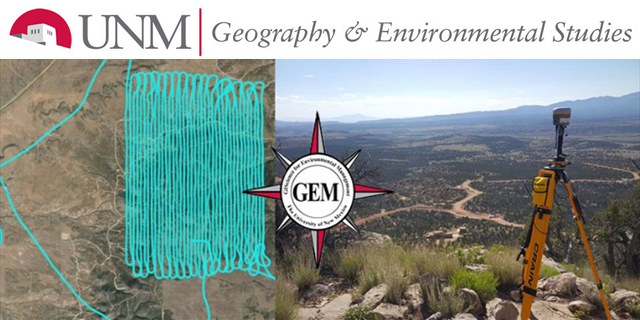
Geography ETDs
Publication Date
Spring 1-24-2018
Abstract
This study identifies land cover changes associated with a ten-year drought period and discusses the importance of vegetation change in Diné Bikéyah, a semi-arid land located in a remote part of the southwestern United States (US). This study concludes that drought produced slight changes in vegetation within a 540 km2 study area in the Tselani-Cottonwood Chapter (TCC) in Diné Bikéyah. The data for this study consist of three Landsat images for the years 1998, 2002, and 2009. The methods used to analyze these Landsat images included image pre-processing, calculation of normalized difference vegetation index (NDVI) images, and supervised (maximum likelihood) classification of land cover. The classification analysis yielded five land-cover categories; land-cover change was assessed using standard change-detection techniques, followed by accuracy assessment of the results. Land-cover change was minimal over the ten-year study period in the TCC, which suggests that vegetation in the study area is resilient to drought and livestock grazing. Identifying land-cover change provides insight on the impact of a drought in Diné Bikéyah. Given the importance of vegetation in Diné livelihoods, and the limited knowledge of land-cover change associated with drought and other climate events, analysis of land-cover change using remote sensing offers the ability to understand how Diné people and livestock might contribute to land-cover change in addition to developing sustainable livestock management strategies.
Degree Name
Geography
Department Name
Geography
Level of Degree
Masters
First Committee Member (Chair)
Chris Duvall
Second Committee Member
Karl Benedict
Third Committee Member
Caitlin L. Lippitt
Document Type
Thesis
Language
English
Keywords
Land cover, remote sensing, supervised classification, Navajo Nation, Tselani-Cottonwood, livestock, drought, vegetation
Recommended Citation
Hawk, Anjanette A.J.. "Impact of Drought on Land Cover Changes in Diné Bikéyah – A Study through Remote Sensing." (2018). https://digitalrepository.unm.edu/geog_etds/37
Included in
Geographic Information Sciences Commons, Physical and Environmental Geography Commons, Remote Sensing Commons
